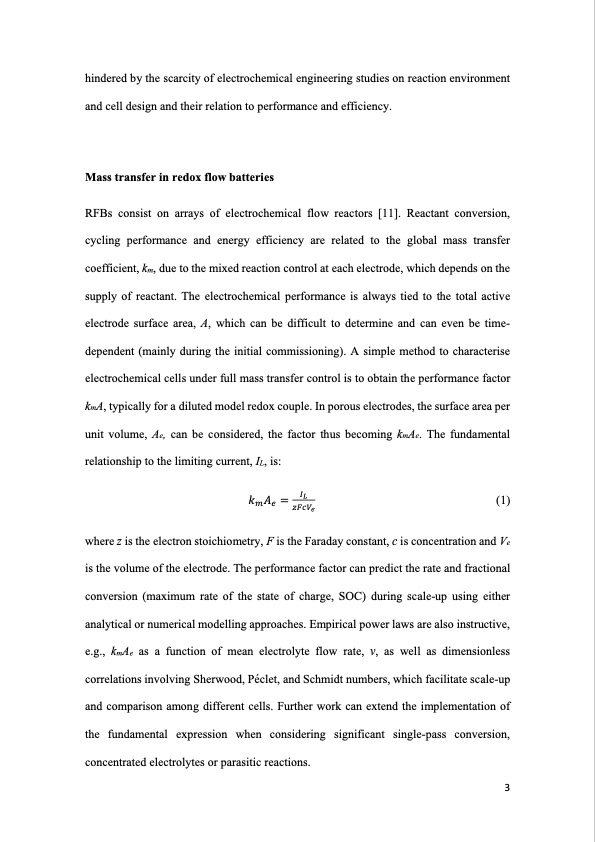
PDF Publication Title:
Text from PDF Page: 003
hindered by the scarcity of electrochemical engineering studies on reaction environment and cell design and their relation to performance and efficiency. Mass transfer in redox flow batteries RFBs consist on arrays of electrochemical flow reactors [11]. Reactant conversion, cycling performance and energy efficiency are related to the global mass transfer coefficient, km, due to the mixed reaction control at each electrode, which depends on the supply of reactant. The electrochemical performance is always tied to the total active electrode surface area, A, which can be difficult to determine and can even be time- dependent (mainly during the initial commissioning). A simple method to characterise electrochemical cells under full mass transfer control is to obtain the performance factor kmA, typically for a diluted model redox couple. In porous electrodes, the surface area per unit volume, Ae, can be considered, the factor thus becoming kmAe. The fundamental relationship to the limiting current, IL, is: (1) where z is the electron stoichiometry, F is the Faraday constant, c is concentration and Ve is the volume of the electrode. The performance factor can predict the rate and fractional conversion (maximum rate of the state of charge, SOC) during scale-up using either analytical or numerical modelling approaches. Empirical power laws are also instructive, e.g., kmAe as a function of mean electrolyte flow rate, v, as well as dimensionless correlations involving Sherwood, Péclet, and Schmidt numbers, which facilitate scale-up and comparison among different cells. Further work can extend the implementation of the fundamental expression when considering significant single-pass conversion, concentrated electrolytes or parasitic reactions. 3PDF Image | Redox flow batteries for energy storage challenges

PDF Search Title:
Redox flow batteries for energy storage challengesOriginal File Name Searched:
Redox_flow_batteries_for_energy_storage.pdfDIY PDF Search: Google It | Yahoo | Bing
Salgenx Redox Flow Battery Technology: Salt water flow battery technology with low cost and great energy density that can be used for power storage and thermal storage. Let us de-risk your production using our license. Our aqueous flow battery is less cost than Tesla Megapack and available faster. Redox flow battery. No membrane needed like with Vanadium, or Bromine. Salgenx flow battery
| CONTACT TEL: 608-238-6001 Email: greg@salgenx.com | RSS | AMP |